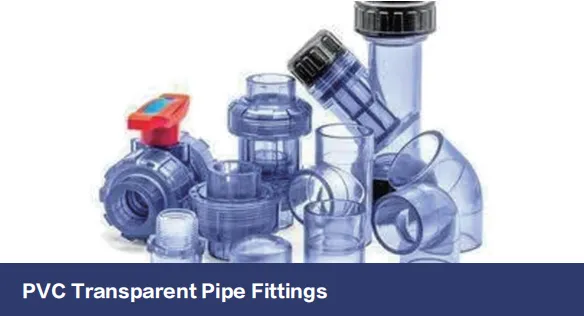When you hold a crystal-clear PVC pipe fitting, you're touching the culmination of rigorous quality systems. Manufacturers who embrace ISO 9001 don't just make products—they engineer trust. Let's pull back the curtain on how this global standard shapes every millimeter of production.
The Certification Crucible: More Than Paperwork
Picture this: A factory humming with activity where quality isn't inspected into products but woven into the process. ISO 9001 turns traditional manufacturing on its head through:
Risk-Based Thinking
Production lines anticipate failure points like chess masters—three moves ahead. Temperature fluctuations? Material viscosity shifts? Contingency plans activate before issues arise.
Documented Ecosystem
From resin delivery notes to calibration logs for optical clarity testers, every action lives in a traceable universe. Forget chasing paper trails—data flows like water through digital dashboards.
Employee Ownership
Machine operators become quality ambassadors, empowered to halt production if specifications drift by 0.1mm. You'll hear line workers debating statistical process control like sports fans analyzing playoffs.
The Chemistry of Clarity
Creating crystal-clear PVC isn't alchemy—it's molecular precision. ISO-certified manufacturers treat raw materials like priceless ingredients:
- Vinyl Chloride Selection: Food-grade monomers with 99.9% purity—tested for heavy metals like lead and cadmium at arrival
- Stabilizer Symphony: Organotin compounds balanced to prevent yellowing while withstanding sterilization
- Recycling Protocol: Regrind material undergoes optical degradation testing—no batch exceeds 15% recycled content
"Clarity isn't just aesthetic—it's diagnostic. In chemical processing plants, workers spot sediment buildup or micro-cracks through these transparent sentinels long before instruments detect issues."
The Gauntlet: Where Fittings Prove Their Mettle
Pressure Surge Simulation
Fittings endure pressure spikes at 4x rated capacity—like highway crash tests for plumbing systems
UV Stability Trials
500-hour accelerated weathering tests measure yellowness index shifts using spectrophotometry
Migration Testing
Sample pieces soaked in acids, alkalis, and solvents for 30 days—monitoring weight changes down to 0.001g
These validation arenas ensure fittings perform whether they're in sterile laboratories or aggressive chemical environments. Continuous monitoring ensures consistent manufacturing practices.
Improvement as Reflex
The "Continual Improvement" clause transforms factories into learning organisms:
- Customer complaint about a joint fitting? Triggers FMEA analysis within 24 hours
- Supplier quality fluctuations? Blockchain-based material tracking updates risk scores in real-time
- Environmental data from installations? Machine learning algorithms predict lifetime performance
An architectural solution provider might suggest installing clear PVC fittings that allow visual monitoring of liquid levels or fluid contamination—a perfect application that marries functionality with quality. This transparency enables quick diagnostics and system maintenance.
Beyond Compliance: The Human Impact
ISO 9001 certified manufacturers live by an unwritten code: Every fitting carries their reputation. That crystal-clear elbow joint in a biopharma plant? It's not just plumbing—it's peace of mind for technicians handling billion-dollar cell cultures. The coupling in a children's hospital hydration system? It's a silent guardian against contamination.
Quality isn't stamped on at the end—it's breathed into raw materials, forged in machinery, and reflected in transparent polymers where imperfections can't hide. In a world of opaque standards, these clear pipes become windows into manufacturing integrity.













